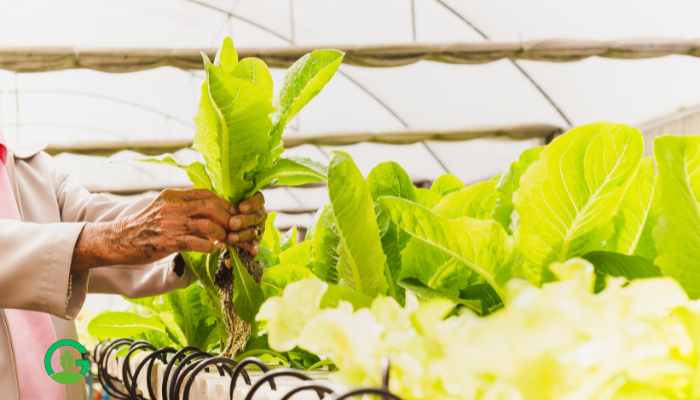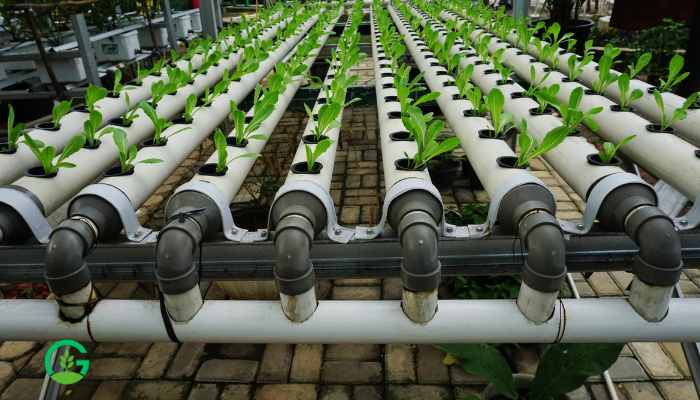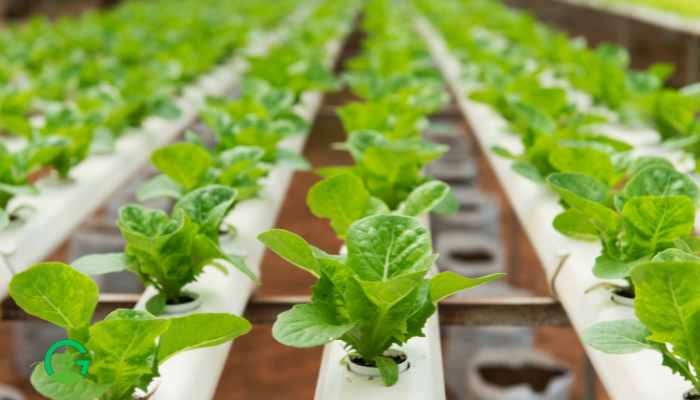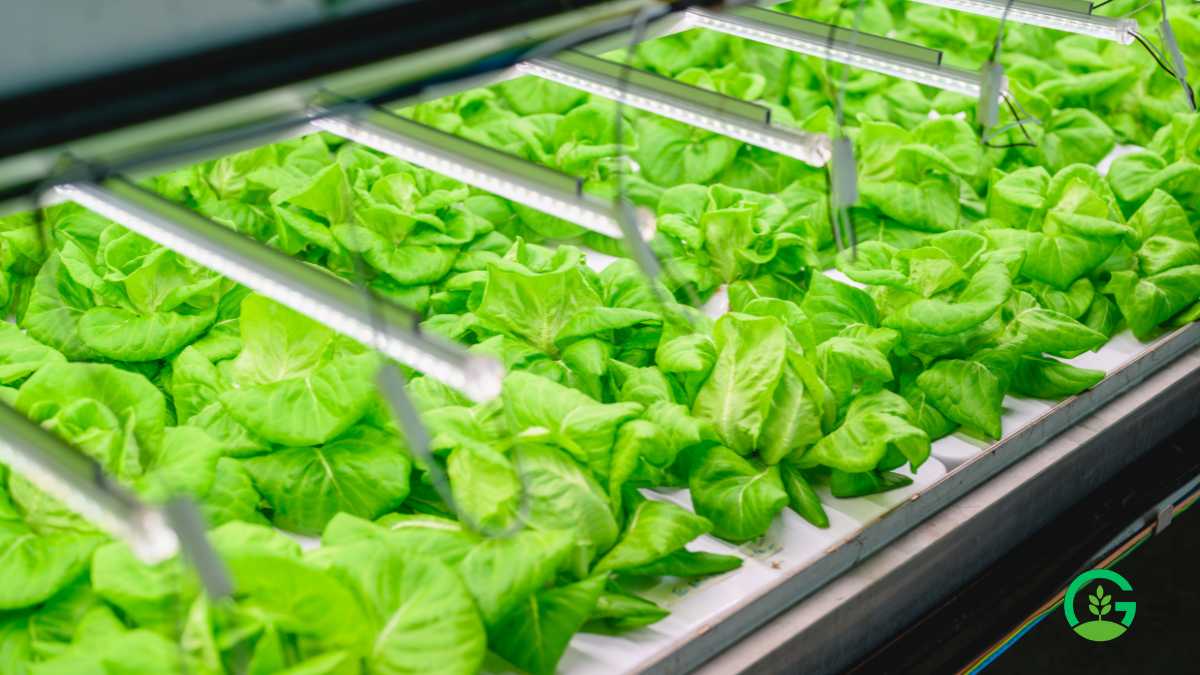Introduction
Are you interested in growing your own fresh vegetables and herbs without the need for soil? Hydroponic gardening might be the perfect solution for you! This method of growing plants uses nutrient-rich water instead of soil, making it possible to cultivate a variety of plants in smaller spaces and with greater efficiency.
Whether you’re a seasoned gardener or a complete beginner, this guide will provide you with all the information you need to start your own hydroponic garden. Let’s dive in!
Table of Contents
What is Hydroponic Gardening?
Hydroponic gardening is a method of growing plants without soil. Instead, plants are grown in a nutrient-rich water solution that provides all the essential minerals they need to thrive. This method allows for faster growth, higher yields, and the ability to grow plants in environments where traditional gardening isn’t feasible.

Benefits of Hydroponic Gardening
Hydroponic gardening offers several benefits, including:
- Space Efficiency: Ideal for small spaces and urban environments.
- Water Conservation: Uses up to 90% less water than traditional soil gardening.
- Faster Growth: Plants grow faster due to direct access to nutrients.
- Fewer Pests and Diseases: Reduces the risk of soil-borne pests and diseases.
- Year-Round Growing: Can be done indoors, allowing for year-round cultivation.
Types of Hydroponic Systems
There are several types of hydroponic systems to choose from, each with its own advantages:
- Deep Water Culture (DWC): Plants are suspended in a nutrient solution, with roots submerged in water.
- Nutrient Film Technique (NFT): A thin film of nutrient solution flows over the roots.
- Wick System: Nutrient solution is drawn up to the roots through a wick.
- Ebb and Flow (Flood and Drain): The growing area is periodically flooded with nutrient solution and then drained.
- Aeroponics: Roots are misted with nutrient solution in an air environment.
- Drip System: Nutrient solution is dripped onto the base of each plant.
Choosing the Right Plants
While many plants can be grown hydroponically, some are better suited for this method than others. Popular choices include:
- Leafy Greens: Lettuce, spinach, kale
- Herbs: Basil, mint, parsley
- Fruits: Strawberries, tomatoes, peppers
- Vegetables: Cucumbers, zucchini

Setting Up Your Hydroponic System
Setting up a hydroponic system involves several steps:
- Choose a System: Select the type of hydroponic system that suits your space, budget, and goals.
- Gather Materials: You’ll need a container or reservoir, growing medium, air pump (for DWC), nutrient solution, and lighting.
- Assemble the System: Follow instructions specific to your chosen system to assemble it.
- Add Plants: Place your plants or seeds into the system, ensuring roots have access to the nutrient solution.
- Fill with Nutrient Solution: Mix the nutrient solution according to the manufacturer’s instructions and add it to the reservoir.
Nutrient Solutions
The nutrient solution is critical for plant growth. It typically contains a mix of:
- Macronutrients: Nitrogen, phosphorus, potassium
- Micronutrients: Iron, magnesium, calcium
Ensure the nutrient solution is balanced and adjusted for the specific plants you are growing. pH levels should be monitored and maintained between 5.5 and 6.5.
Lighting Requirements
Lighting is essential for photosynthesis. If growing indoors, you’ll need to provide artificial light:
- LED Grow Lights: Energy-efficient and provide the full spectrum of light.
- Fluorescent Lights: Good for small setups and leafy greens.
- High-Intensity Discharge (HID) Lights: Suitable for larger setups and fruiting plants.
Ensure plants receive 14-16 hours of light per day for optimal growth.
Read More
Maintaining Your Hydroponic Garden
Regular maintenance is key to a successful hydroponic garden:
- Monitor Water Levels: Ensure the nutrient solution is at the correct level.
- Check pH and Nutrients: Regularly test and adjust pH and nutrient concentrations.
- Clean System: Prevent algae and bacteria buildup by cleaning components regularly.
- Prune Plants: Remove dead leaves and trim plants to promote healthy growth.
Common Problems and Solutions
Hydroponic gardening can encounter a few issues:
- Algae Growth: Keep light out of the nutrient solution reservoir to prevent algae.
- Nutrient Deficiencies: Regularly check and adjust nutrient levels.
- Root Rot: Ensure proper aeration and avoid overwatering.
- Pests: Inspect plants regularly and use organic pest control methods if needed.

Harvesting and Enjoying Your Produce
Harvesting your hydroponic plants depends on the type of plant:
- Leafy Greens: Harvest outer leaves as needed.
- Herbs: Trim regularly to encourage new growth.
- Fruits and Vegetables: Harvest when fully ripe for the best flavor.
Enjoy your fresh, homegrown produce in salads, smoothies, and various dishes!
Conclusion
Starting a hydroponic garden is a rewarding and efficient way to grow your own food. By choosing the right system, providing essential nutrients and lighting, and maintaining your garden, you can enjoy fresh produce year-round. Embrace the future of gardening and experience the joy of hydroponic growing!
FAQs
What is the easiest hydroponic system for beginners?
The Deep Water Culture (DWC) system is often recommended for beginners due to its simplicity and low cost.
How often should I change the nutrient solution?
It’s generally recommended to change the nutrient solution every 2-3 weeks to prevent nutrient imbalances and algae growth.
Can I use tap water for my hydroponic garden?
Yes, but it’s important to test the water’s pH and adjust it as needed. You may also need to dechlorinate the water if it contains high levels of chlorine.
How much light do hydroponic plants need?
Most hydroponic plants require 14-16 hours of light per day. Using a timer can help ensure consistent lighting.
Is hydroponic gardening expensive to start?
While the initial setup cost can be higher than traditional gardening, hydroponic gardening can save money in the long run through water conservation and higher yields. Basic setups can be done on a budget, making it accessible for many.
















